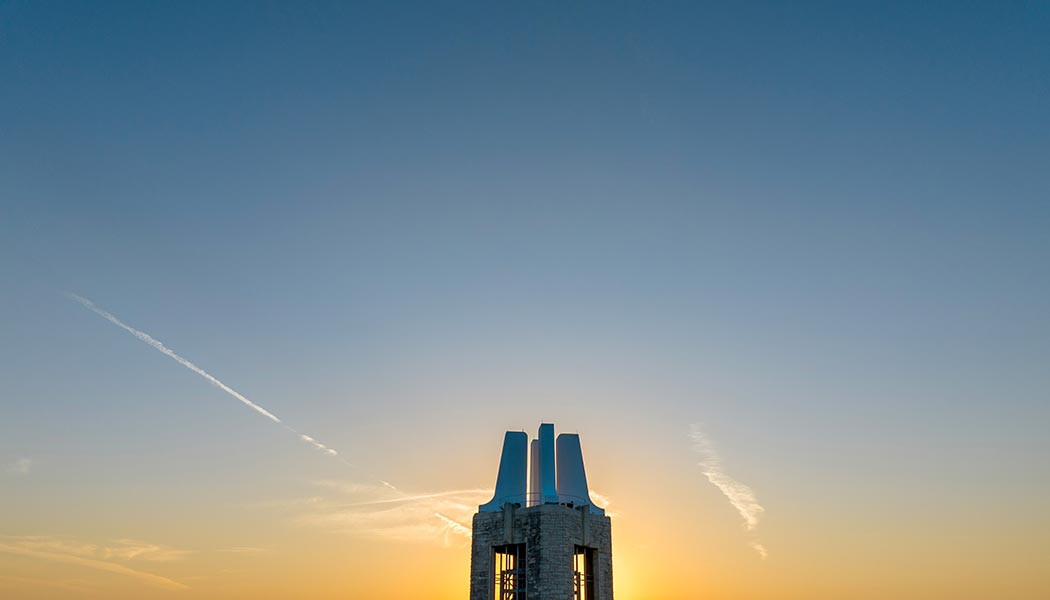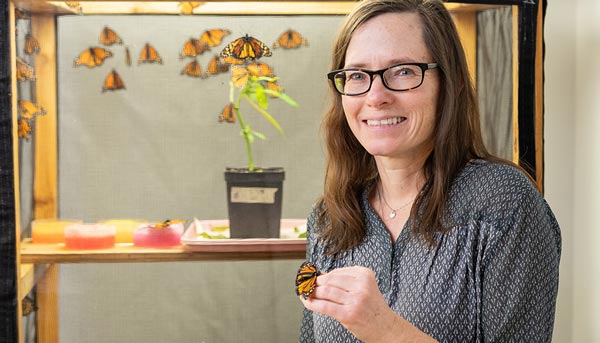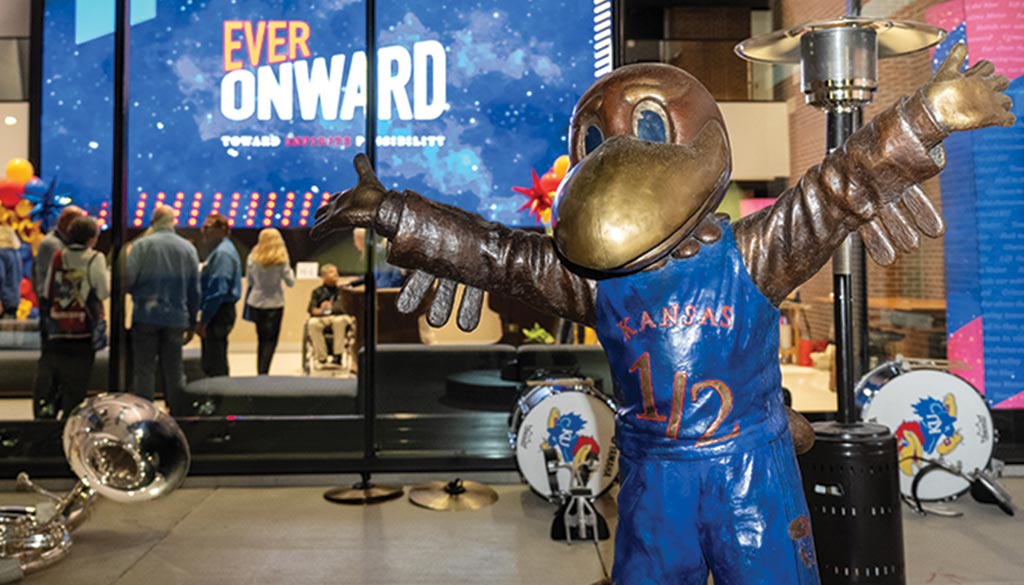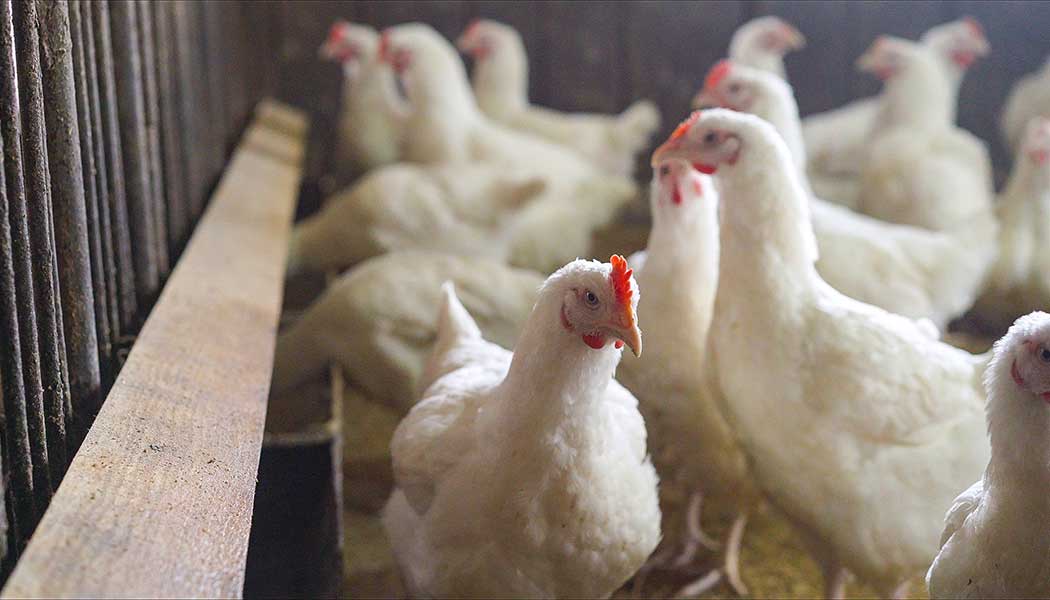KU hosts building dedication ceremony for Gray-Little Hall
Long-delayed tribute to University’s 17th chancellor still rings true.

Never one for fanfare or frivolity, Chancellor Emerita Bernadette Gray-Little at first frowned on the notion of formally dedicating the Integrated Science Building in the Central District in her honor five years after its doors opened.
But after many pleas and reminders from her former colleagues, led by Chancellor Doug Girod and Joe Monaco, g’06, associate vice chancellor for public affairs, Gray-Little relented and returned to the Hill with her husband, Shade Keys Little, from their home in Chapel Hill, North Carolina, to celebrate with fellow Jayhawks on Oct. 26, during Homecoming week.
Originally scheduled for April 2020, the celebration of Gray-Little Hall was among the first major University events postponed by the pandemic and the last to finally take place. But even a 42-month delay could not diminish the gratitude of Jayhawks who jubilantly reunited with KU’s 17th chancellor.
After confessing that she first thought the celebration would be “redundant,” Gray-Little told the crowd that she realized the day could offer a prime opportunity for her to affirm the importance of science and thank KU leaders, the Kansas Board of Regents and all those who helped transform a vision and years of dreaming and planning into a reality.
“I want to acknowledge the efforts of many members of the KU community who have been instrumental in making this happen. And from everything that I see, their effort has been well worth it,” Gray-Little said. “I’m awed by the teaching and discovery of the faculty, staff and students who call this building their workplace. That work goes on here every day and night, and it has already begun to make a difference to address the challenges that face the world.”
She cited examples of promising research projects in clean energy, manufacturing, electronics and computing, and drug discovery and therapeutics, especially related to Alzheimer’s disease, cancer and infectious diseases such as COVID-19.
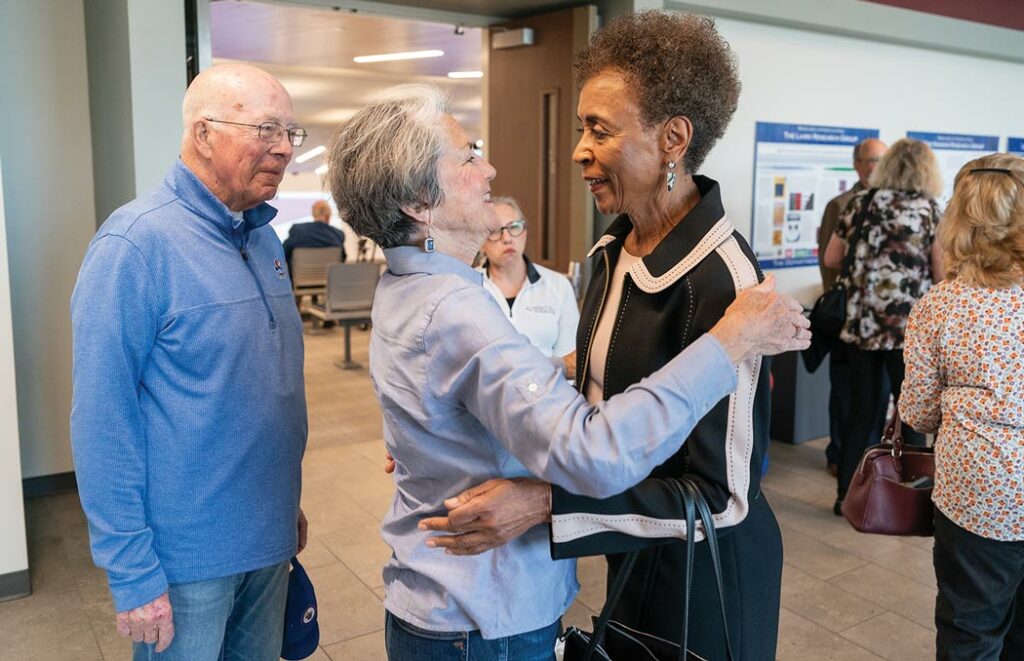
Gray-Little also spoke frankly about the misinformation and politics that marred the nation’s response to the pandemic. “Even when outstanding science is being done, public skepticism about science can hinder the potential benefits,” she said. “I think you can all easily recall the rhetoric about the COVID vaccine. If you trust statistical analysis at all, there’s strong evidence that vaccine refusal caused excess death. Moreover, the refusal and death rate varied by political ideology.”
Gray-Little posed questions to which she hopes fellow scholars and society will seek answers: “Why was the polio vaccine so eagerly received in the 1950s, and we had so much resistance about the COVID vaccine?” she asked. “Why has respect for science and universities in general changed in the last several years? The most important question may be, how can we increase the American public’s, and especially our students’, basic knowledge of science and their ability to see the distinction between fact and opinion? Science is about facts. It is also about uncertainties. Can we achieve more effective and honest science communication?
“Facts matter, knowledge matters, objective measures of reality matter. And that is why I’m honored to be associated with a place that will emphasize discovery, facts, knowledge, and perhaps even truth, while producing new products and therapies to benefit humanity.”
In closing, the chancellor emerita repeated her gratitude to all who played a role in completing the hall, adding, “The University of Kansas and the society that we serve are better for your efforts. And it is my great honor to share this special day with you.”
Proof of concept
Steven Soper, Foundation Distinguished Professor of Chemistry and Mechanical Engineering and one of 12 Foundation Professors recruited to KU during Gray-Little’s tenure from 2009 to 2017, offered data to affirm that the hall that bears her name has lived up to its billing as a hub for advanced, interdisciplinary research and teaching:
- The 330,000-square-foot structure includes four collaborative classrooms, 21 teaching labs and 41 research labs.
- Gray-Little Hall hosts teaching and research that involves 4,514 undergraduate students and 151 graduate students in chemistry, medicinal chemistry, physics, molecular biosciences and related fields.
- In 2022, 28 research groups in the building secured $24,823,941 in research funding.
Jennifer Jackson Sanner, j’81, is editor of Kansas Alumni magazine.
Photos by Steve Puppe
/
